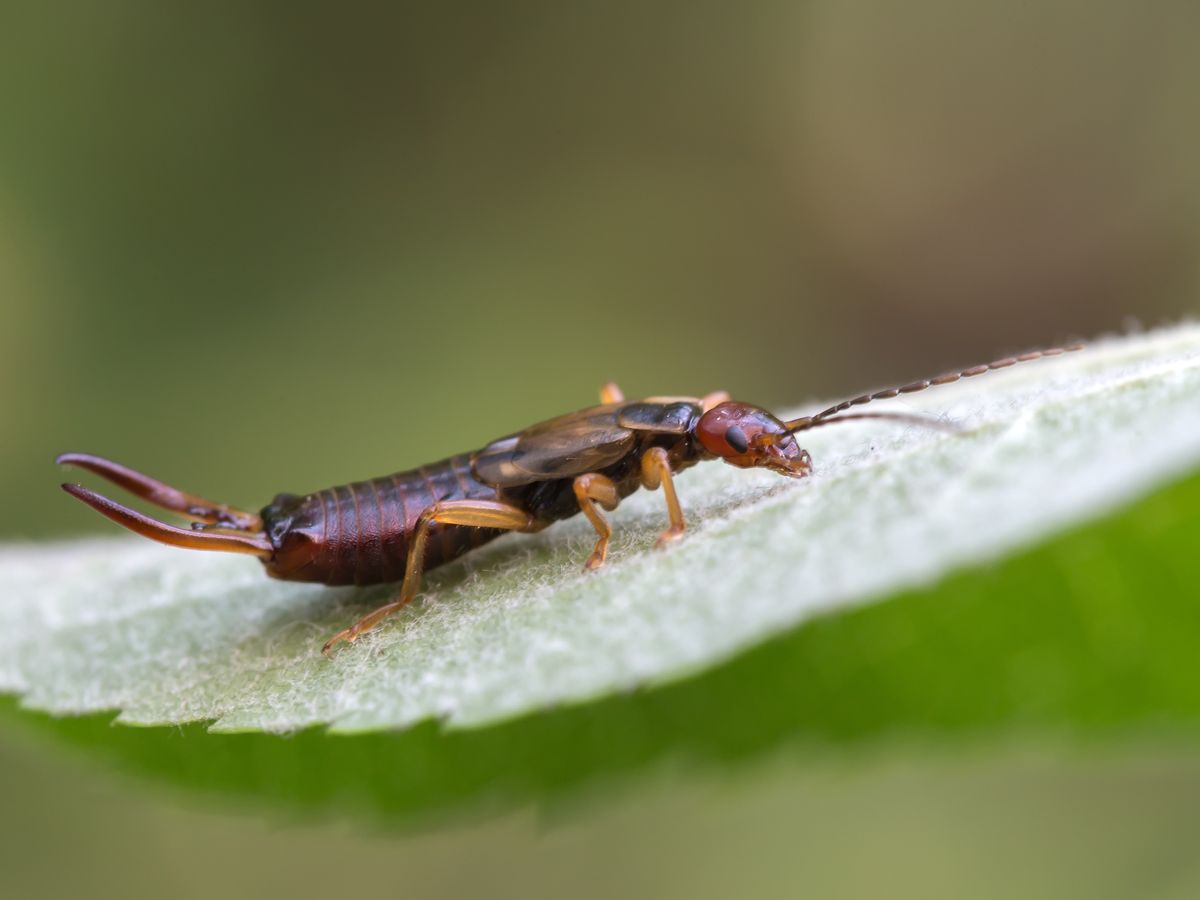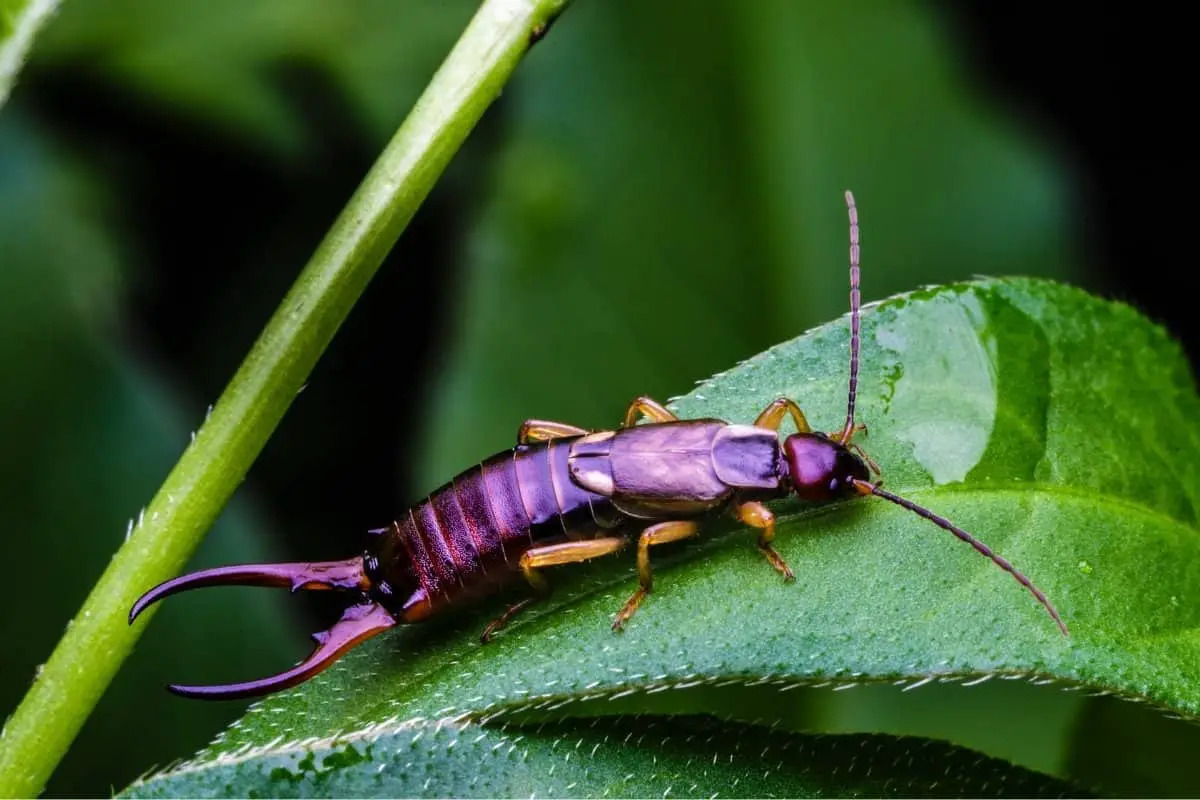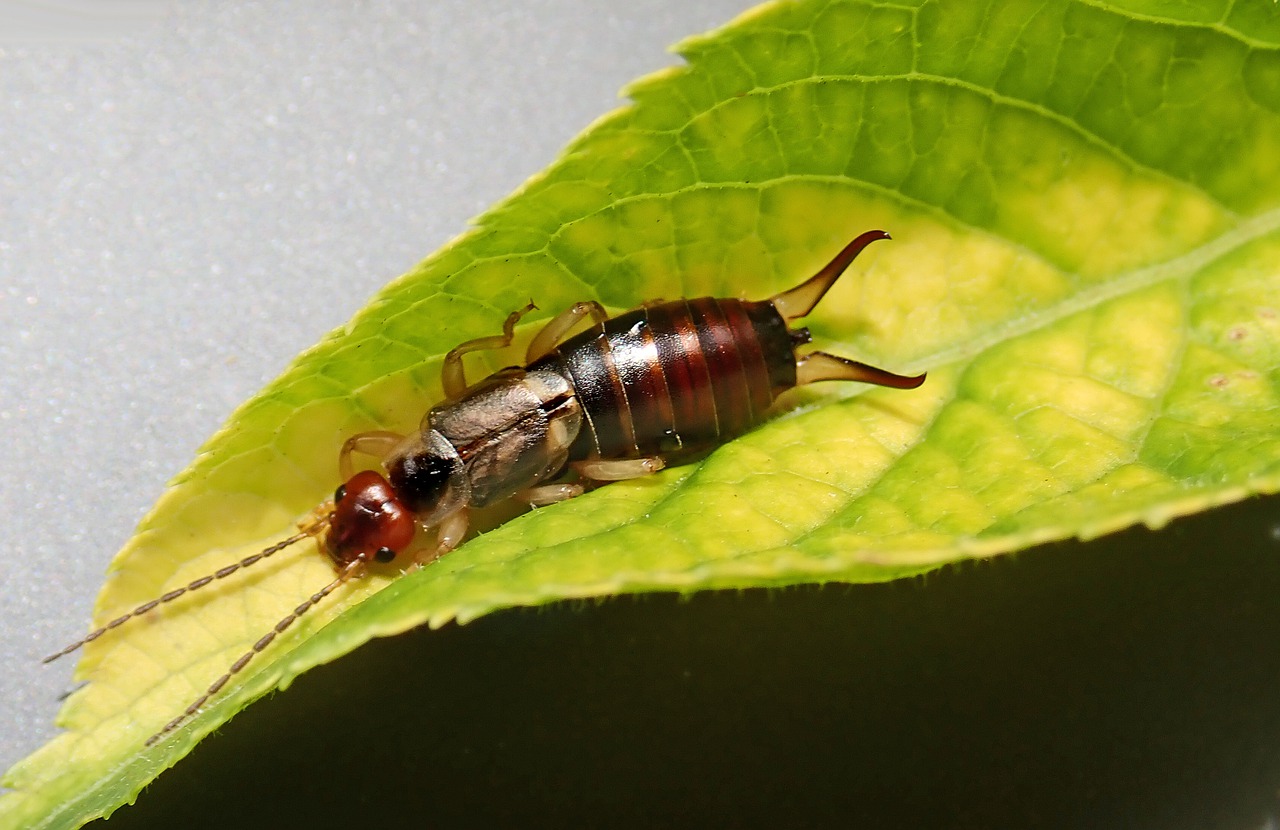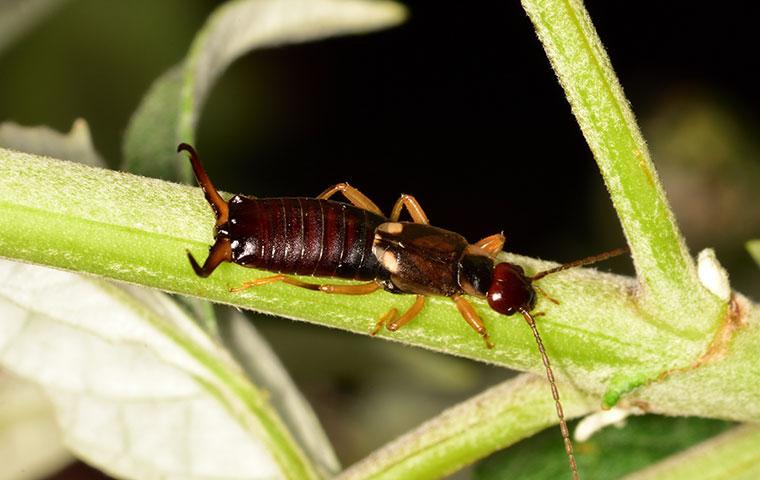How To Get Rid of Earwigs on Plants
Earwigs, also known as pincher bugs, are small and slender insects often found in gardens, landscapes, and other warm, humid environments. They range in size from 5-25 mm and have a brownish to black color. Earwigs are typically nocturnal creatures that take shelter beneath plant material, decaying wood piles, and rotting logs during the day.
These pests feed on living plants as well as soft-bodied insects like aphids and mites. They can cause significant damage to landscape plants if they’re not controlled. In addition to damaging plants, earwigs can also produce a foul odor when disturbed or crushed.
Are Earwigs Bad For Your Garden?
The short answer is, yes. Earwigs can do significant damage to gardens and landscape plants. They feed on living plants as well as soft-bodied insects like aphids and mites. If left unchecked, they can quickly destroy your foliage, flowers, fruits, and vegetables. They are particularly attracted to lettuce, fruit, celery, and flowers but will consume other plants if the opportunity arises.
Fortunately, earwigs don’t have to ruin your garden if you take the right steps to control them. You can start by removing any decaying wood or plant material from the area that may be attracting earwigs in the first place.
Additionally, you can use traps or insecticides to eliminate existing infestations or prevent new ones from developing. Finally, practice good gardening habits such as keeping weeds down and maintaining healthy soil so that your plants remain strong and less attractive to pests like earwigs.
Recognizing Signs of Earwig Infestation in Your Garden
Identifying an earwig infestation in your garden can be difficult, as many of the signs are similar to those caused by other pests. To spot an infestation, look for jagged leaves and holes in plants that seem to appear overnight.
Earwigs feed at night and hide during the day beneath pots or under the soil, so this kind of damage is more likely after a rainy day. Another sign of an earwig infestation is small black pellets on the plants; these are bits of earwig excrement. If you find any of these signs, it's time to take action to get rid of the pests before they cause further damage!
What Causes an Abundance of Pincher Bugs in Your Garden?
Pincher bugs, or earwigs, are common garden pests that can cause significant damage to plants if left unchecked. While some species of earwigs are beneficial to gardens, the most common species found in gardens and yards can become a nuisance when their populations get out of control.
There are several possible reasons for why you may have lots of pincher bugs in your garden. One possible reason is that there is too much moisture in your garden, as earwigs thrive in humid conditions. Another possibility is that you have large piles of mulch or firewood near your garden, as this provides an inviting home for them.
Finally, it could be that there are other insects nearby that earwigs feed on, so they're attracted to your yard for their food source. Whatever the cause may be, it's important to take steps to reduce the number of earwigs in your garden so they don't cause further damage!
What Are the Preferred Places for Earwigs to Lay Eggs?
Earwigs are common garden pests that can cause significant damage to plants. Female earwigs lay their eggs in protected areas that aren't likely to be disturbed, such as cracks and crevices, underneath wet leaves, or between layers of mulch.
A single female can lay up to 50 eggs at a time, though this may vary depending on the species. The eggs are usually round and either white or tan in color. Earwig eggs typically hatch within a week, making it difficult for gardeners to control their populations.
To reduce the number of earwigs in your garden and stop further damage, it's important to locate where they are laying their eggs so you can take steps to get rid of them. This means inspecting the areas most likely to be used by female earwigs for egg-laying - these include cracks and crevices, underneath wet leaves, or between layers of mulch.
How To Prevent An Earwigs Infestation In The Garden
Preventing an earwig infestation in the garden is an important part of keeping your plants healthy and looking their best. To do this, it's important to understand what attracts them and how they reproduce. Earwigs thrive in areas with plenty of moisture, so be sure to water your plants in the morning when the soil still has time to dry out before nightfall.
Overwatering can create a perfect environment for earwigs and other pests, so be sure not to overwater your garden. It's also important to keep your garden clean by removing dead plants and plant parts as these can provide food sources for earwigs.
Mulch should also be kept at a reasonable level; piling it up too high can create ideal conditions for female earwigs to lay eggs. Lastly, inspect your garden regularly and take action if you find any evidence of eggs or adult insects. By following these tips, you'll have a better chance of preventing an earwig infestation in the garden!
Implement An IPM Strategy
Implementing an IPM strategy is an effective way to protect your garden from pests such as earwigs. It involves a holistic approach that includes physical, chemical, and biological methods of pest control. This strategy is particularly useful for commercial growers or hobbyists with large gardens, as it allows you to quickly identify and address the problem before it becomes out of control.
Physical methods include using barriers such as screening or netting around your garden bed to prevent pests from entering. You can also use traps in areas where earwigs are most likely to congregate and lay eggs.
Chemical methods involve using insecticides that target specific pests; however, these should only be used as a last resort and should be applied carefully according to the instructions on the label. Biological methods include introducing beneficial bugs into the garden which will feed on other pests, like earwigs, and help keep their population under control.
Efficient Ways to Get Rid of Earwigs in Your Garden Using Natural Methods
Getting rid of earwigs in the garden naturally doesn’t have to be a hassle. There are several easy and effective methods you can use to keep earwigs away from your plants.
One of the most popular natural remedies is to sprinkle diatomaceous earth around the base of your plants. This powder is made up of tiny, sharp particles that will cut through an earwig’s exoskeleton and dehydrate it when it comes into contact with it. It should be reapplied after a light rain or watering session and usually works well at killing off any existing earwig infestations.
Start With Insect Traps
Insect traps can be a great way to kickstart your earwig control efforts. These traps are designed to attract, capture, and monitor the number of earwigs in your garden. This is important because it helps you determine the size of the population and decide which method of control will be most effective.
The most popular type of trap is sticky traps, which are pieces of flat cardboard coated with a sticky substance. Earwigs will crawl onto these traps and become stuck until you remove them. Place these around your plants or garden beds for best results.
You can also build homemade traps out of plastic containers filled with vegetable oil or beer. The smell from these liquids will attract earwigs, who will then drown when they enter the liquid. Be sure to check your traps regularly and empty them out when they're full.
Natural Home Remedies To Get Rid Of Earwigs In The Garden
If you're looking for an easy and natural way to get rid of earwigs in your garden, there are several home remedies you can try. One popular method is to spread petroleum jelly or Vaseline around the base and stems of your plants. Earwigs won't usually crawl over it, so this can be a great way to protect your plants from damage.
Another effective remedy is diatomaceous earth, which is a type of fine powder made from fossilized algae. It works by cutting into the waxy exoskeleton of the earwigs, causing them to dry out and die. You can apply it directly to your plants or use it as a perimeter treatment around their bases.
Finally, you can also build an oil pit trap using equal parts vegetable oil and soy sauce in a small container with holes punched into the top. This will attract the earwigs and they won’t be able to escape once inside the liquid mixture. Be sure to check these traps regularly and empty them when full for best results.
Try Diatomaceous Earth
Diatomaceous earth (DE) is an incredibly effective natural way to get rid of earwigs in your garden. DE is a fine powder made from fossilized algae, and works by cutting into the waxy exoskeleton of the earwigs, causing them to dry out and die. You can apply it directly to your plants or use it as a perimeter treatment around their bases for added protection.
Just be sure to put some around the base of your plants in dry weather - you may have to reapply whenever it rains. To get the most out of DE, use a duster or spray bottle to ensure even coverage across all affected areas.
This natural remedy is an easy and effective way to help protect your plants from damage caused by earwigs without resorting to harsh chemicals or poisons.
Bring Beneficial Bugs Such As The Tachinid Fly To The Fight
Bringing beneficial bugs to the fight against earwigs on plants can be an incredibly effective method of pest removal. The tachinid fly is a natural predator of earwigs, so by planting species that attract these beneficial insects you can reduce their population in your garden.
Dill, fennel, calendula, and alyssum are all great choices as they provide food and shelter for the tachinid fly. Planting these species near areas with earwig problems will help keep the flies in your garden and naturally reduce the number of earwigs preying on your garden plants.
Be sure to keep the flowers well-maintained with regular waterings and trimmings to ensure that the tachinid fly continues to thrive in your garden. With some patience and dedication, you can effectively use beneficial bugs to control pests without resorting to harsh chemicals or poisons.
Does Soapy Water Kill Earwigs?
Soapy water is an effective way to kill earwigs on contact. The surfactants in the soap penetrate the insect's armor, killing them quickly and easily. To effectively use soapy water to get rid of earwigs, fill a bucket with water and add a few drops of liquid dish soap. Then simply drop any earwigs you find into the bucket and they should die shortly thereafter.
It's important to note that soapy water will not prevent adult earwigs from coming back, but it can be useful for reducing their population if used regularly. If you're looking for a natural way to control pests without resorting to harsh chemicals or poisons, then giving soapy water a try may be just what you need!
What Is The Best Pesticide To Kill Earwigs?
The best pesticide to kill earwigs depends on the severity of the infestation. For small outbreaks, products containing pyrethrins or azadirachtin are often effective. Pyrethrins are a natural insecticide derived from chrysanthemums and have been used in organic gardening for centuries.
Azadirachtin is an organic insecticide derived from neem oil that has low toxicity for humans and pets but is highly toxic to insects. Both of these active ingredients can be found in the General Hydroponics AzaMax Concentrate and PyGanic Gardening Insecticide.
Final Thoughts On How To Get Rid Of Earwigs In The Garden
Getting rid of earwigs in the garden can be tricky, but with a bit of effort, you can have your plants back to their former glory in no time. Natural remedies like diatomaceous earth and nematodes are effective options for small outbreaks, while botanical insecticides and synthetic pesticides can be used for more severe infestations.
No matter what method you choose, it's important to read the label carefully before use and follow all safety instructions. With a bit of patience and some hard work, your beautiful garden will soon be free from these pesky pests.












